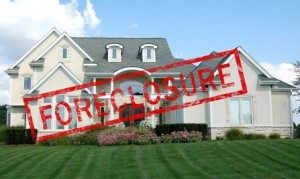What Does it Mean to Buy and Bail?
“Buying and bailing” refers to the act of buying a second property and allowing a first home to fall into foreclosure. Homeowners who purchase second properties in this scenario are typically “upside down” on their primary residence, meaning they owe more on their first home than it is worth in the current market. It’s likely that they had an adjustable rate mortgage and their monthly mortgage payment grew to a payment they could no longer afford. For some, an easy solution appears to be buying a second property at a depressed price with a fixed rate mortgage in order to lower their monthly mortgage payments. At the same time, they let their first home fall into foreclosure – hence the term buying and bailing.
You may wonder why a lender would loan someone money for a second property when they are already having difficulty making the mortgage payments on their first home. Typically, the buying and bailing homeowners will state in their loan applications that they intend to rent out the first property, but it should be noted that lying on a loan application constitutes fraud. Fanny Mae and Freddy Mac have instituted rules to curb the practice, but it continues. In addition to fraud, homeowners could get themselves into deep water when dealing with foreclosure and second properties.
Things to Consider About Foreclosure and Second Properties
There are two different scenarios that can occur with foreclosures and second properties. The first is the buy and bail situation explained above where the homeowner buys a second property and allows the home that has been his primary residence to go into foreclosure. The second is where a homeowner has a second property, perhaps a vacation home, and allows that second property to go into foreclosure.
When a home goes into foreclosure it will be auctioned off – usually for a much lower amount than what is actually owed on the property. The difference between the amount owed and the amount received at auction is called a “deficiency balance.”
How the settlement of the deficiency balance will be handled varies greatly depending on where you live and your state’s laws regarding foreclosure and the enforcement of deficiency balances. In many U.S. states, deficiency balances are treated like all other unsecured debts, and lenders may seek a deficiency judgement on a borrower following foreclosure. This allows a lien on the second property for whatever amount is still owed on a prior home loan. In California, Arizona and some other states, lenders may be prevented from doing this if the house was a primary residence.
If you have a vacation home that goes into foreclosure, and end up owing a deficiency balance after foreclosure on that second property, the lender may file a lawsuit against you to collect the debt. This could result in garnishment of your wages, levies on your bank accounts, and/or liens placed on your property, including your primary residence, depending on your state’s laws relating to the enforcement of judgments.
After foreclosure, the lender, otherwise known as the judgment creditor, may be able to force the sale of your primary residence to obtain the money needed to pay off its judgment depending on the state in which you live. Judgment creditors are more likely to pursue a forced sale of your property if you have a lot of equity in your home. Therefore, if you have a substantial amount of equity in your primary residence, you may want to think long and hard before allowing a foreclosure on your second property. A consultation with an attorney specializing in real estate law is advisable before deciding to let a foreclosure on a second property to occur.

